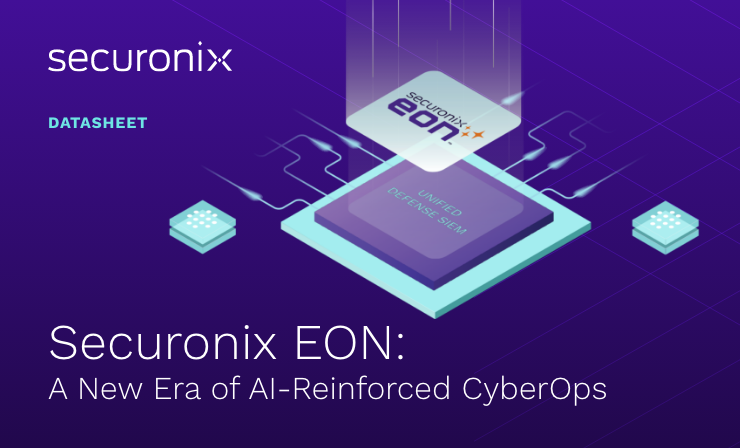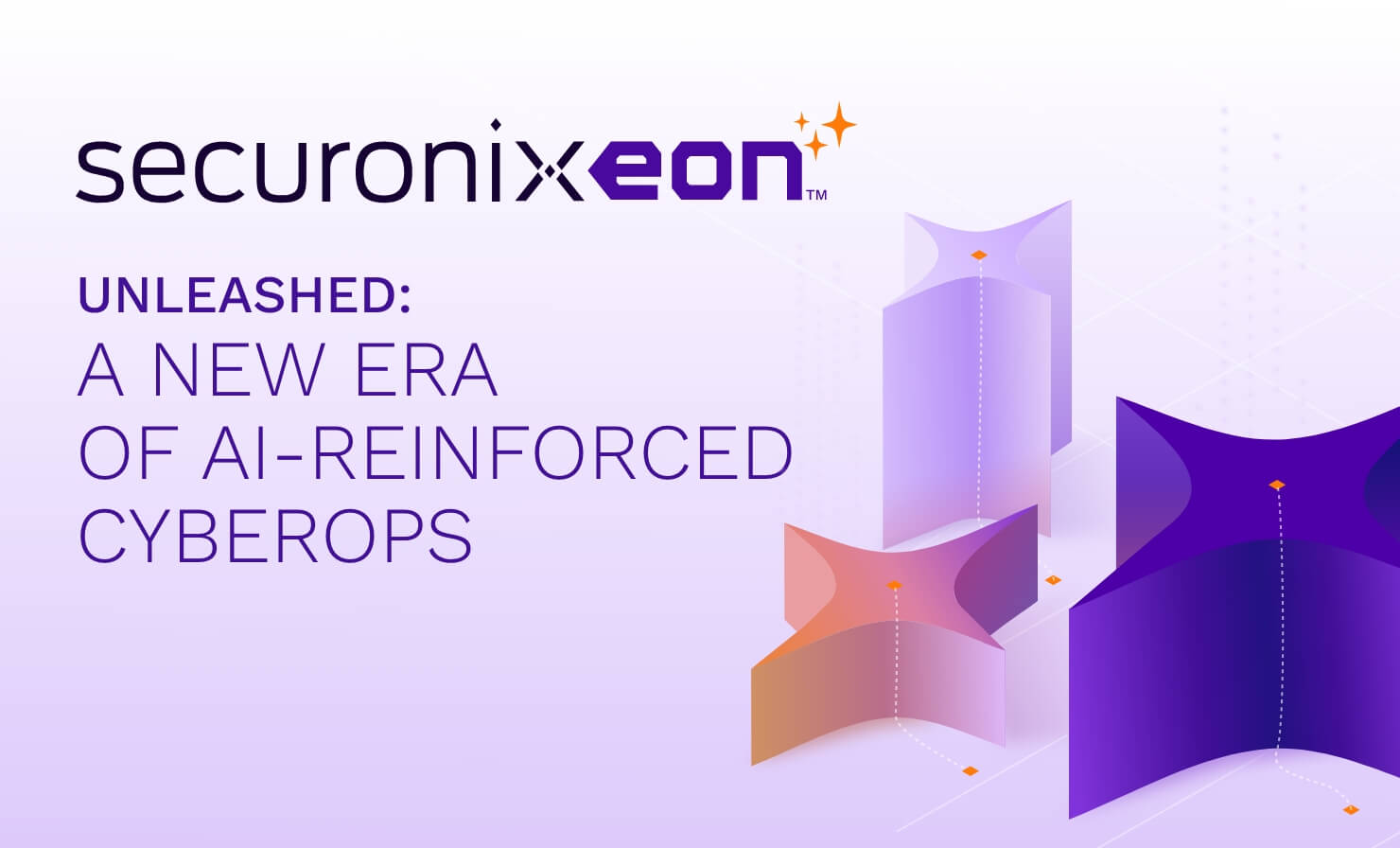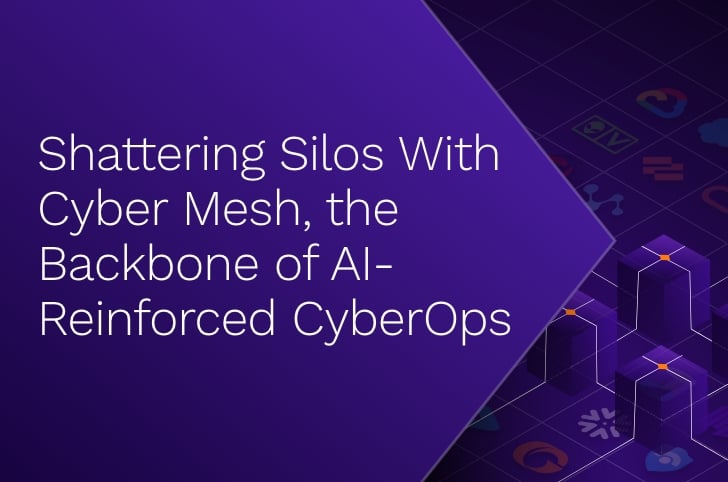- Why Securonix?
- Products
-
- Overview
- 'Bring Your Own' Deployment Models
-
- Products
-
- Solutions
-
- Monitoring the Cloud
- Cloud Security Monitoring
- Gain visibility to detect and respond to cloud threats.
- Amazon Web Services
- Achieve faster response to threats across AWS.
- Google Cloud Platform
- Improve detection and response across GCP.
- Microsoft Azure
- Expand security monitoring across Azure services.
- Microsoft 365
- Benefit from detection and response on Office 365.
-
- Featured Use Case
- Insider Threat
- Monitor and mitigate malicious and negligent users.
- NDR
- Analyze network events to detect and respond to advanced threats.
- EMR Monitoring
- Increase patient data privacy and prevent data snooping.
- MITRE ATT&CK
- Align alerts and analytics to the MITRE ATT&CK framework.
-
- Industries
- Financial Services
- Healthcare
-
- Resources
- Partners
- Company
- Blog
SIEM
Cybersecurity threats are as constant as change itself. Organizations face a barrage of cyberattacks, from sophisticated phishing campaigns, to ransomware outbreaks, to AI-Powered attacks. Security teams are tasked with staying ahead of these threats, but the sheer volume of alerts and vulnerabilities can be overwhelming. This is where Cyber Threat Intelligence (CTI) steps in, a key component in the fight against cybercrime.
What is Threat Intelligence?
Cyber Threat Intelligence (CTI) is the collection, analysis, and dissemination of information about potential and existing cyber threats. It provides valuable insights into the tactics, techniques, and procedures (TTPs) used by cybercriminals, helping organizations proactively identify, prioritize, and mitigate cyber threats.
Think of CTI as a detailed map of the cyber threat landscape. By understanding the adversaries, their motives, and their preferred methods of attack, organizations can fortify their defenses and respond more effectively to incidents.
The Importance of Cyber Threat Intelligence
Cyber Threat Intelligence empowers organizations with proactive defense strategies. Here’s how CTI plays a crucial role in cybersecurity:
- Understanding Potential Threats: CTI allows you to anticipate possible attacks by learning about current cyber threats, emerging malware variants, and attacker behavior patterns.
- Preventing and Mitigating Cyber Attacks: Using CTI, you can identify vulnerabilities in your systems before attackers exploit them. This allows for timely patching and configuration changes that significantly reduce the attack surface.
- Faster and More Effective Incident Response: With CTI, security teams can prioritize alerts based on the severity of the threat and respond with relevant countermeasures, minimizing damage and recovery time.
Who Benefits from Threat Intelligence?
Cyber Threat Intelligence (CTI) is a valuable asset for organizations of all sizes and industries. However, certain organizations can benefit from CTI more significantly due to specific factors:
- Organizations handling sensitive data: Financial institutions, healthcare providers, and government agencies often deal with highly confidential information that is a prime target for cybercriminals. CTI can help them understand the specific threats they face and take appropriate measures to protect their data.
- Organizations with strict compliance requirements: Industries such as finance, healthcare, and government are subject to various regulations and compliance standards. CTI can help these organizations identify and address potential vulnerabilities that could lead to compliance breaches.
- Organizations with complex IT infrastructures: Large organizations with extensive networks and systems are more susceptible to cyberattacks due to their increased attack surface. CTI can help them identify vulnerabilities across their entire infrastructure and prioritize remediation efforts.
- Organizations that want to improve their overall security posture: CTI can provide valuable insights into emerging threats and best practices, enabling organizations to strengthen their defenses and reduce their risk of cyberattacks.
Components of Cyber Threat Intelligence
CTI is not a monolithic entity; it’s composed of different categories with distinct purposes. Here’s a breakdown of the four main types:
- Strategic Threat Intelligence: This long-term view focuses on understanding the motivations, capabilities, and goals of major threat actors and cybercrime groups. It helps organizations define overall security strategies and resource allocation. Strategic threat intelligence can provide insights into emerging trends, geopolitical factors, and the likely direction of cybercrime activities.
- Tactical Threat Intelligence: This type focuses on specific attack campaigns, malware variants, and emerging vulnerabilities. It provides actionable information for immediate response and mitigation. Tactical threat intelligence can help organizations identify and respond to active threats, such as phishing campaigns, ransomware attacks, and supply chain attacks.
- Operational Threat Intelligence: This real-time intelligence provides details about ongoing attacks, indicators of compromise (IOCs), and compromised assets. It supports immediate investigation and containment efforts. Operational threat intelligence is crucial for responding to active cyberattacks and mitigating their impact.
- Technical Threat Intelligence: This granular intelligence delves into the technical details of malware, exploits, and threat actor tools. It empowers security teams to detect and block specific threats at the network or endpoint level. Technical threat intelligence is essential for understanding the technical aspects of cyberattacks and developing effective countermeasures.
Examples of each CTI type and their use cases:
- Strategic CTI: By understanding the common attack vectors used by ransomware groups, organizations can prioritize security awareness training for employees to reduce the risk of successful phishing attacks.
- Tactical CTI: Receiving early warnings about a new phishing campaign targeting a specific industry allows organizations to adjust email filtering rules and educate users to avoid falling victim to these attacks.
- Operational CTI: Detecting a specific IOC associated with known botnet activity on your network enables immediate isolation and remediation, preventing further damage and data exfiltration.
- Technical CTI: Learning about a new vulnerability in a widely used software program empowers organizations to patch systems before attackers exploit it, mitigating potential risks.
The Cyber Threat Intelligence Lifecycle
The CTI process is cyclical, with continuous collection, analysis, and dissemination of intelligence. It involves the following stages:
- Planning and Direction: Define your organization’s specific needs and threat intelligence requirements.
- Data Collection: Gather information from various sources, including internal security logs, threat feeds, and external intelligence reports.
- Processing and Analysis: Analyze the collected data to identify relevant threats, assess their severity, and determine potential impact.
- Dissemination and Sharing: Share actionable intelligence with relevant stakeholders within your organization, such as security teams and incident responders.
- Feedback and Improvement: Continuously improve the CTI process based on feedback and the effectiveness of implemented countermeasures.
Cyber Threat Intelligence Tools
Modern CTI tools go beyond simple data aggregation. They offer powerful features that streamline the CTI process and provide valuable insights. These tools often include:
- Threat intelligence platforms: Centralized hubs for collecting, analyzing, and distributing threat intelligence.
- Threat hunting tools: Specialized tools designed to proactively search for and identify hidden threats within your network.
- Security information and event management (SIEM) systems: While primarily used for security monitoring, SIEMs can also be integrated with CTI platforms to provide a comprehensive view of your security posture.
How to Choose a CTI Tool
Selecting the right Cyber Threat Intelligence (CTI) tool is crucial for enhancing your organization’s security posture. The ideal tool should not only fit well with your current security systems but also adapt as your security needs evolve. Consider the following key factors when choosing a CTI tool:
- Scalability: Ensure the tool can handle your organization’s data volume and complexity.
- Integration capabilities: The tool should seamlessly integrate with your existing security infrastructure.
- Ease of use: A user-friendly interface can make it easier for your team to leverage CTI effectively.
- Cost-effectiveness: Evaluate the tool’s pricing and licensing options to ensure it fits within your budget.
Cyber Threat Monitoring
Cyber threat monitoring is a critical component of a comprehensive CTI program. It involves continuously monitoring your network and systems for signs of suspicious activity. Effective threat monitoring can help you detect and respond to attacks in real time.
Techniques and strategies for effective monitoring include:
- Network traffic analysis: Monitor network traffic for anomalies and suspicious patterns.
- Endpoint security: Deploy endpoint protection solutions to detect and prevent malware infections.
- Log analysis: Analyze security logs for indicators of compromise.
- Threat intelligence feeds: Subscribe to threat intelligence feeds to stay updated on the latest threats.
- Security orchestration, automation, and response (SOAR) platforms: Use SOAR to automate threat response workflows and improve efficiency.
Implementing Cyber Threat Intelligence in Your Organization
Integrating CTI into your cybersecurity strategy is essential for staying ahead of threats. Here are some steps to follow:
- Assess your needs: Determine your organization’s specific threat intelligence requirements based on your industry, size, and risk profile.
- Choose the right CTI tools: Evaluate different CTI solutions based on your needs, budget, and compatibility with your existing security infrastructure.
- Implement the CTI solution: Deploy the CTI solution and integrate it with your existing security tools. This may involve data migration, configuration, and testing.
- Train your staff: Educate your security team on how to use CTI effectively. This includes providing training on the SOAR interface, workflows, and best practices.
- Monitor and optimize: Continuously monitor the performance of your CTI program and make adjustments as needed. This includes reviewing incident response times, identifying areas for improvement, and updating your CTI strategy.
Conclusion
Cyber Threat Intelligence is an indispensable asset for organizations looking to protect themselves from the ever-evolving threat landscape. By understanding the motivations, tactics, and techniques of cybercriminals, organizations can proactively defend against attacks, reduce the impact of incidents, and improve their overall security posture.
Securonix has more than 15 years experience in the Cyber Threat Intelligence space and a robust suite of capabilities including an AI-Reinforced SIEM, integrated SOAR, advanced UEBA, and in-house data science and threat research teams. If you would like to learn more about how Securonix can help your organization identify and remediate threats with 10x precision, speed and efficacy, check out our website or book a demo today!






